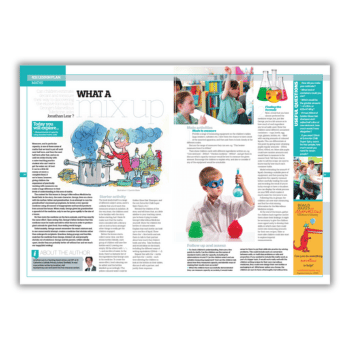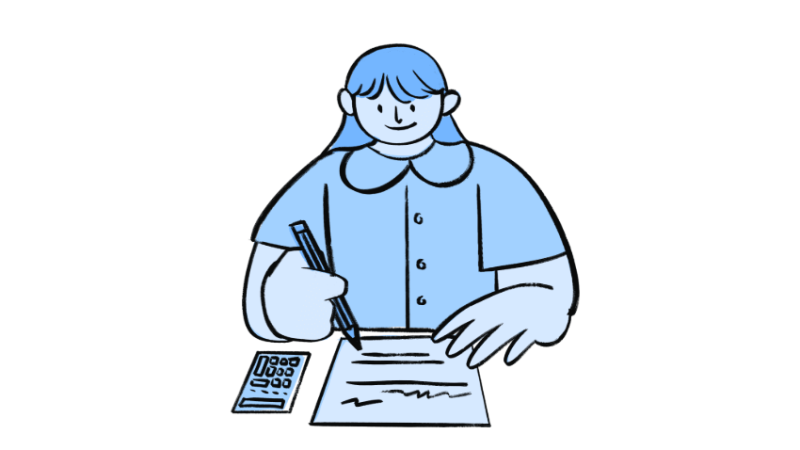Estimation maths – Activity ideas for KS1 and KS2

Foster curiosity, collaboration and enjoyment of maths with these estimation activities

- by Nicola_Adams

Many years ago, I took part in a maths fluency project which required some pre-assessment. I was teaching Year 2 and one task involved estimation maths; children plotting numbers on to a blank number line marked with 0 at the beginning and 100 at the end.
I told them I was going to call out six numbers, fairly quickly, and they were to position them correctly. I read out: 2, 9, 15, 37, 51, 85.
Try this with your class and see what happens.
My class tended to spread out the first few numbers quite considerably, leaving the larger numbers bunched up at the end of the line.
This, I later discovered, was called ‘logarithmic representation’ (Siegler, R. S. & Booth) and is common, as young children are not very skilful estimators.
Estimating in maths
So, why does this matter? Well, estimation maths is a key human skill.
We use estimation regularly as adults, e.g., ‘It’s roughly 150 miles away’; or ‘This shopping is probably going to cost around £70’.
The more experience we have with estimating and comparing our estimate with ‘the actual’, the better we become.
Across the 47 pages of the maths national curriculum for KS1 and KS2, ‘estimation’ is referred to 15 times.
This would appear to give it little credence. However, when we begin to consider how skills of estimation can open doors into all other areas of maths, we see how crucial it is.
Estimation plays a key role in several key areas, including (but not limited to):
- developing number sense and secure understanding of magnitude to enable informed checking of answers to calculations;
- understanding of measurements such as time, distance, and volume.
So, how can we explicitly teach these skills? To make estimation more than just a guess, we need to base our judgement around experience and knowledge.
How to estimate in maths
Try making number magnitude and estimation a regular part of your fluency sessions.
Over time, this can increase children’s self-efficacy. It is also especially powerful for children with poor attendance, EAL, and those with SEND.
To start with, provide plenty of real life, concrete experiences and connect the language of estimation and comparison.
For example, place three containers on a table, and put different amounts of plastic balls (or counters, or whatever manipulatives you have) into each one. Label the one with the most (e.g. 15 balls) and with the least (e.g. 5 balls), but leave the middle container unlabelled.
Model your inner monologue to children: “I think the middle tub has about 12 balls because 12 is between 5 and 15 but closer to 15. What do you think?”
For differentiation, try changing the size of the objects in the containers, the shape of the containers, and which containers are labelled (if any).
Then, start to make connections to abstract representations of number (such as number lines).
For example, provide children with a strip of border roll (pre-cut so it’s the same length as a 0-100 bead string) and ask them to label a selection of numbers on the line in the right positions (with 0 on the left, and 100 on the right). They can then line up the bead string to see how accurate they were with their estimates.
To increase accuracy, model benchmarking. Fold the border roll in half, and give pupils vocabulary such as ‘the midpoint’.
This will enable children to place their numbers more accurately. For example, “I know that 39 is between 0 and 50 but is closer to 50.” Folding the border roll again will increase accuracy further as quartiles are introduced.
Estimation challenge
You can also try building a maths challenge board. Start with a familiar structure – maybe a line split into 10 equal parts to mirror your counting stick. You can then add lines of the same length separated into five sections, four sections, and three sections.
Label one end of one of the lines with a value (say, 2,500) and the other end with another (2,900). Pop an arrow on the line, and ask pupils to estimate what they think the number might be.
You can move the arrow around the differently sectioned lines over time to consider different benchmarks. For example, for the quartile line, responses may include:
- I can see that 2,500 is at the start and 2,900 is at the end, so the midpoint will be 2,700.
- [The arrow number] couldn’t be 2,800 because that’s more than the midpoint.
- It could be 2,648 because that’s close to the midpoint between 2,600 and 2,700.
Use sticky notes to quickly change the values at either end of the lines.
Some easy changes for differentiation:
- Change the start and end numbers.
- Only provide the number the arrow is pointing to – what could the start and end numbers be?
- Include units of measure, e.g., for money, time, or length.
- Include fractions / decimals where appropriate.
My top tip would be to start with a low number range, no matter which year group you are teaching.
This will get every child on board and understanding what they’re looking at before you move towards higher values.
Pupil confidence will then develop over time, leading to positive emotions associated with maths; including enjoying a challenge, and wanting to keep trying, even when they find things difficult.
Estimation in context
Next, show children why and how this knowledge is so useful.
For example, predicting and checking answers. When pupils have arrived at a solution to a problem and they are asked to ‘check their answer’ (likely because someone else has noticed it’s not correct), do they know what that really means or how to do it?
Children who struggle with maths often find it difficult to make use of estimates due to a lack of remembered experience and / or knowledge.
They will tend to rely on unthinkingly applying taught procedures. This inhibits their ability to know if their solution to a problem is likely to be correct or incorrect.
For example, consider this calculation: 4 x 604 = 240,016.
A child who lacks understanding of number magnitude and rounding (two of the underpinning elements of successful estimation) will be less likely to notice an issue.
However, a child who has an estimated product in mind (somewhere around 2,400) will know that there’s no way this can be correct and so will go back to see what went wrong:
If 4 x 6 ones = 24 ones, then 4 x 6 hundreds will be 24 hundreds. That’s 2,400.
It couldn’t be 240,016 because that’s WAY bigger than 2,400.
604 is around 600 so the answer is likely to be approximately 2,400.
Having this regular discussion with a different calculation each time will build children’s capacity and motivate them to think about this more independently.
In time, it will become a more natural part of their problem-solving process.
Useful estimation maths vocabulary
Sentence frames
- I can see that… so…
- I know that… so…
- I think… because…
- If… then…
- It could be… because…
- It couldn’t be… because…
Useful words
- Roughly
- About
- Around
- Approximately
- More than
- Less / fewer than
- Between
- Close to
- Midpoint
- Quartiles
- Equal parts
- Whole
Nicola Adams is a maths teaching and learning advisor for HfL Education. Follow Nicola on Twitter @NicolaAMaths and learn more about the annual online maths challenge events. Download our Year 2 maths worksheets.










